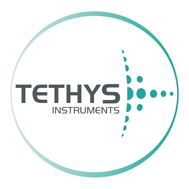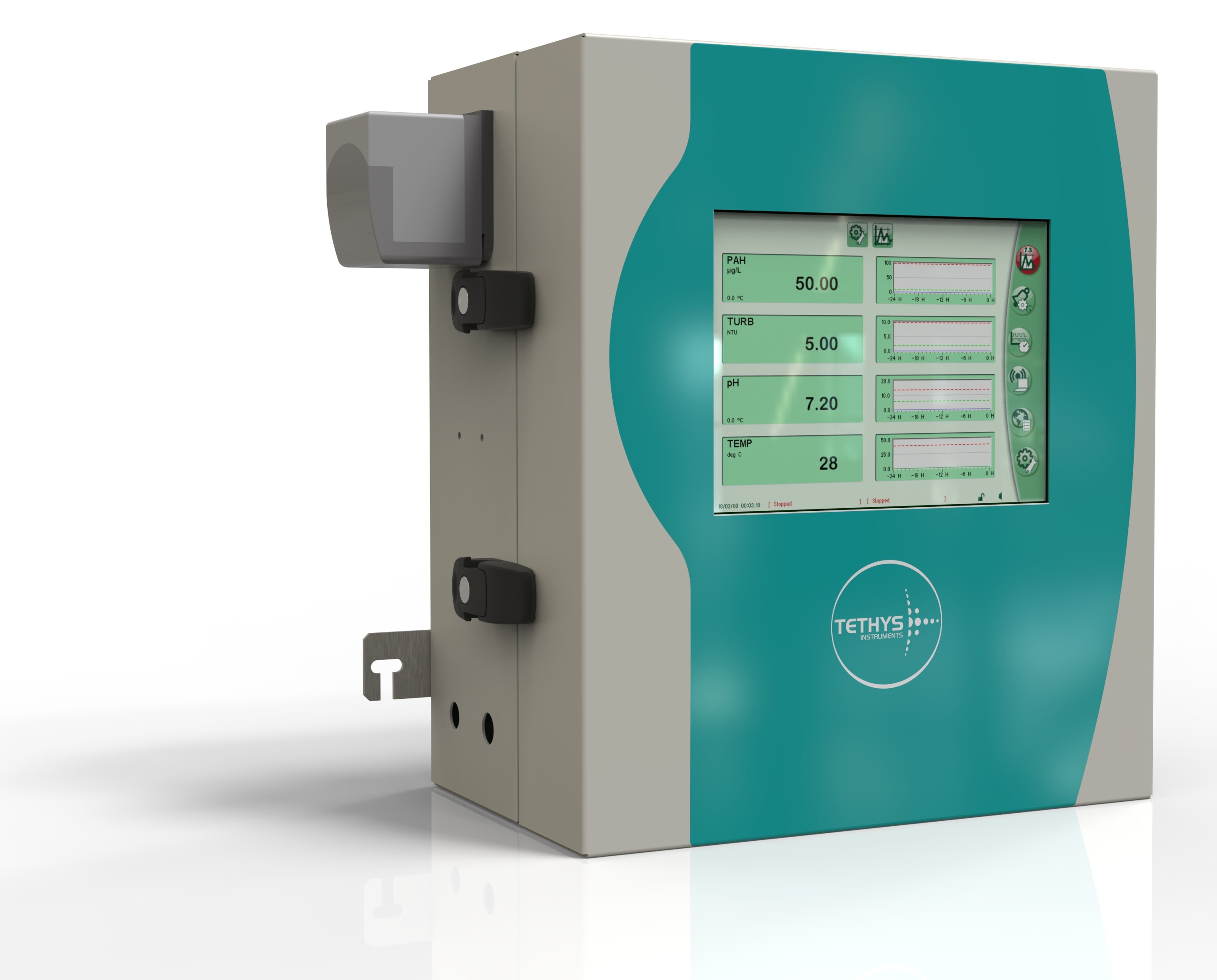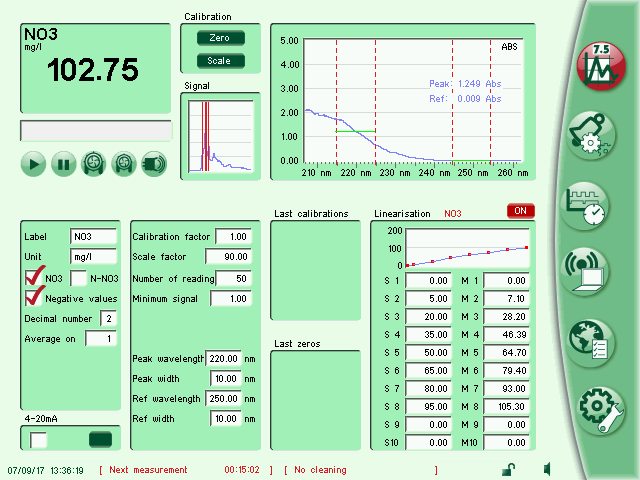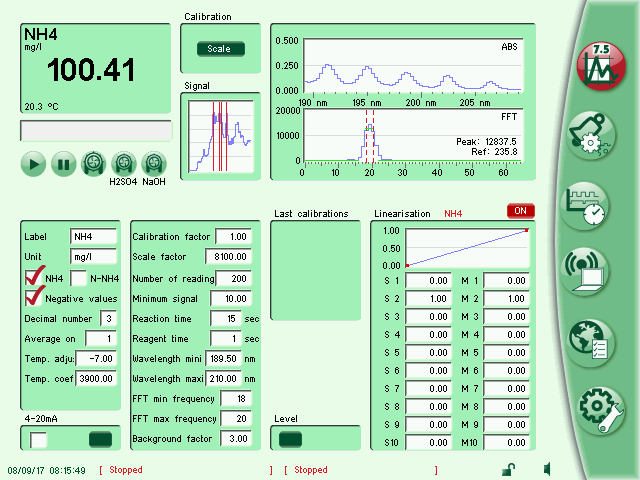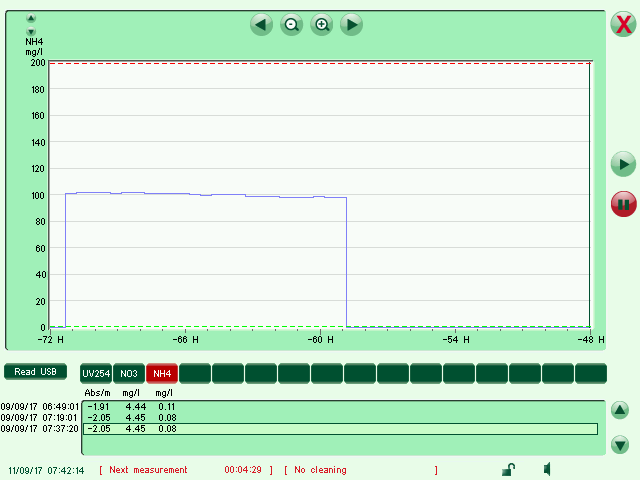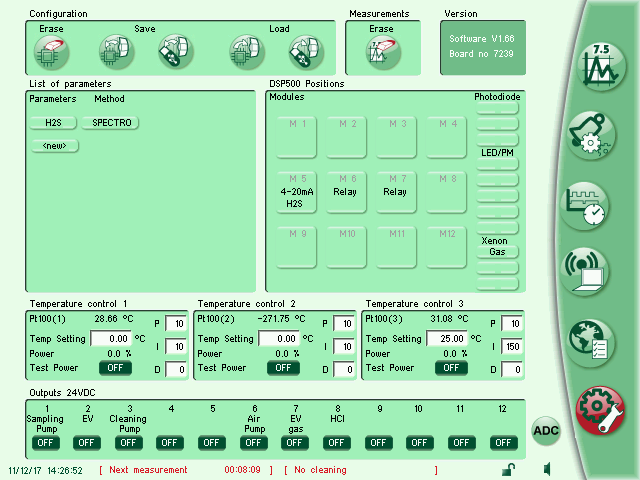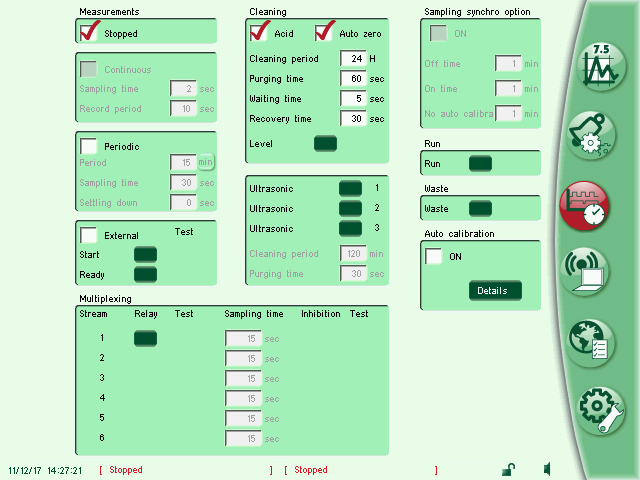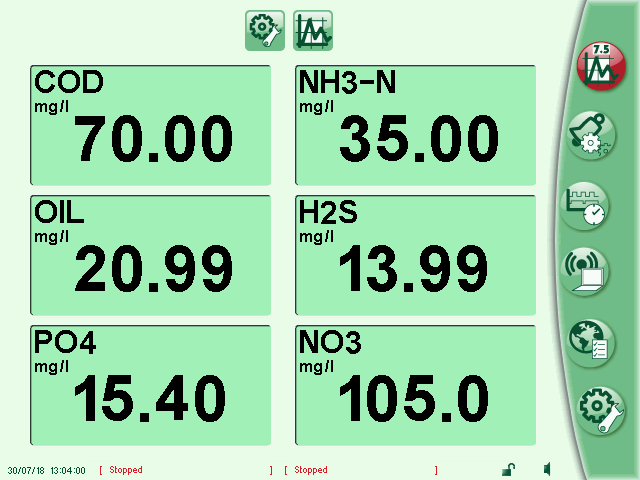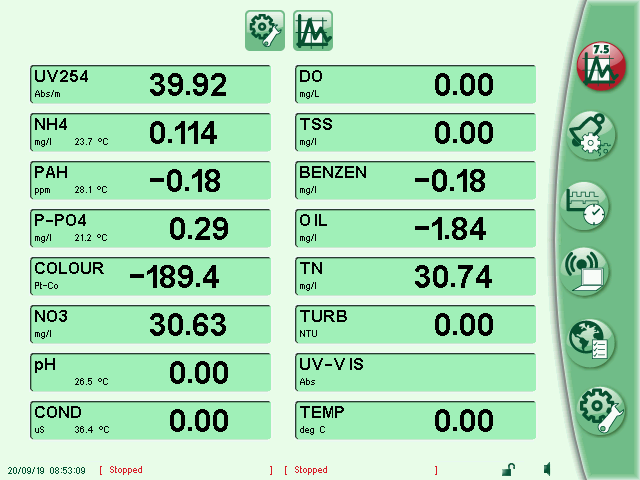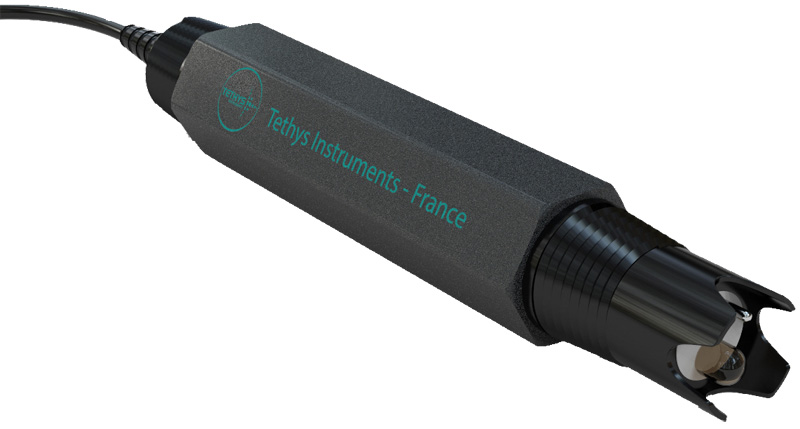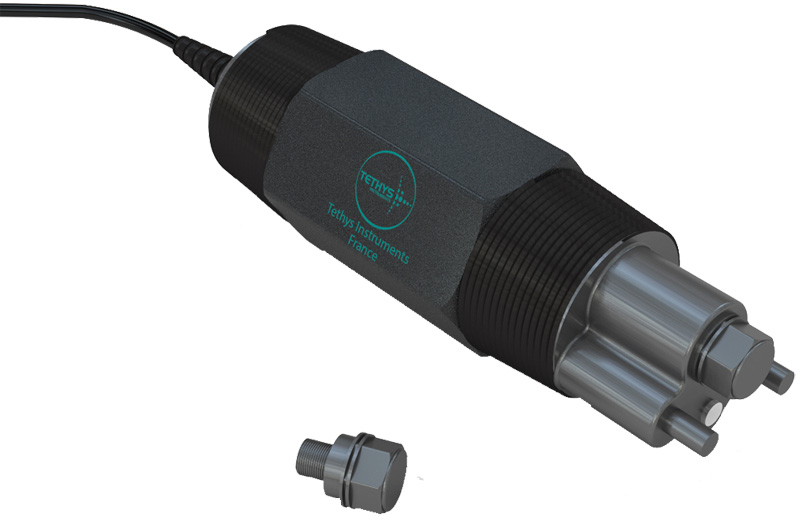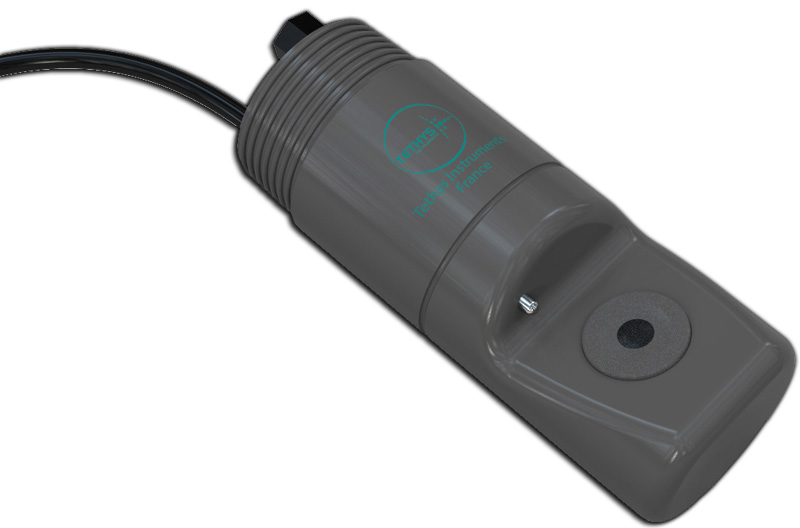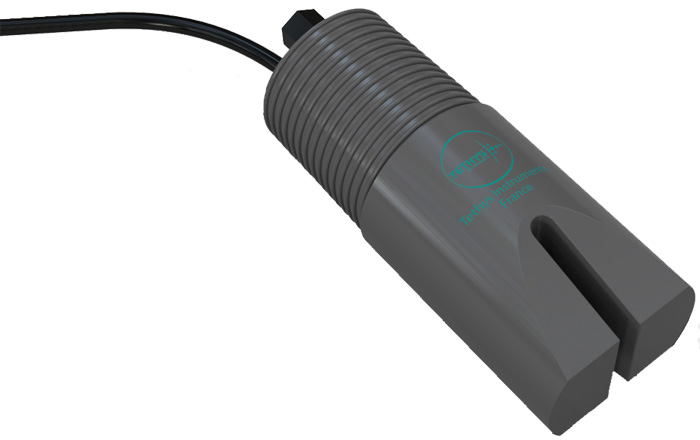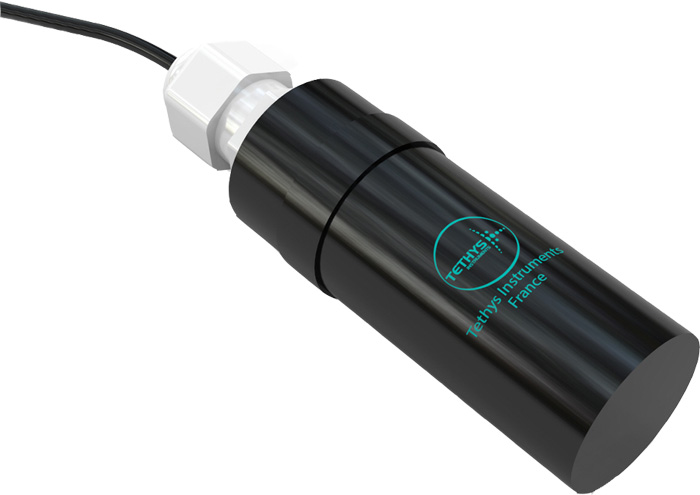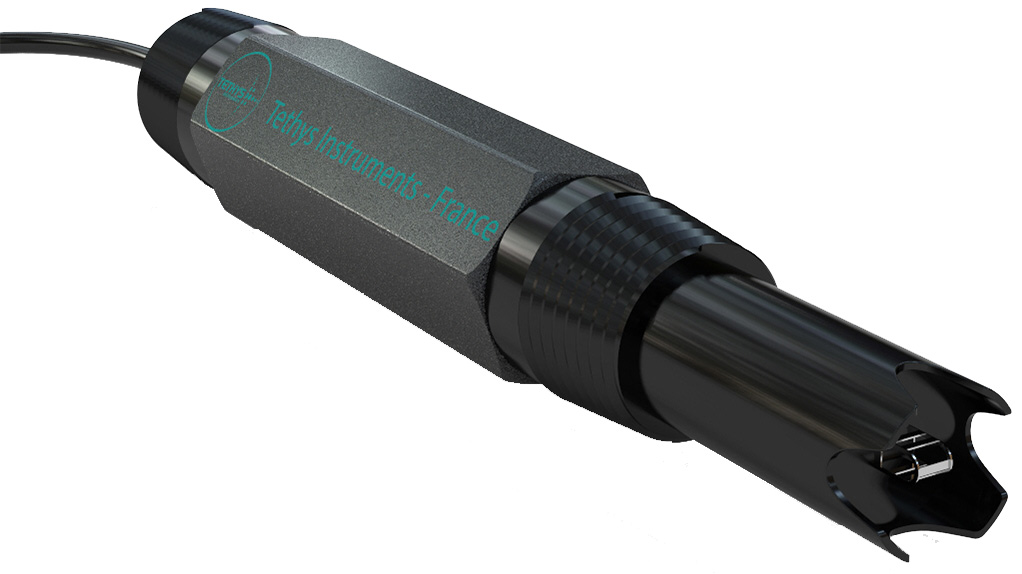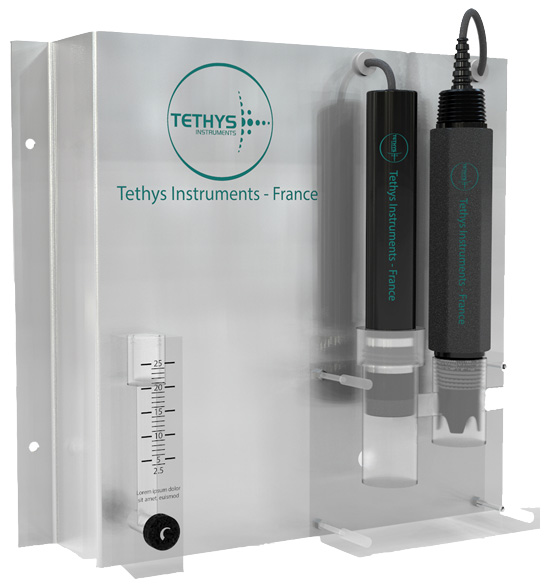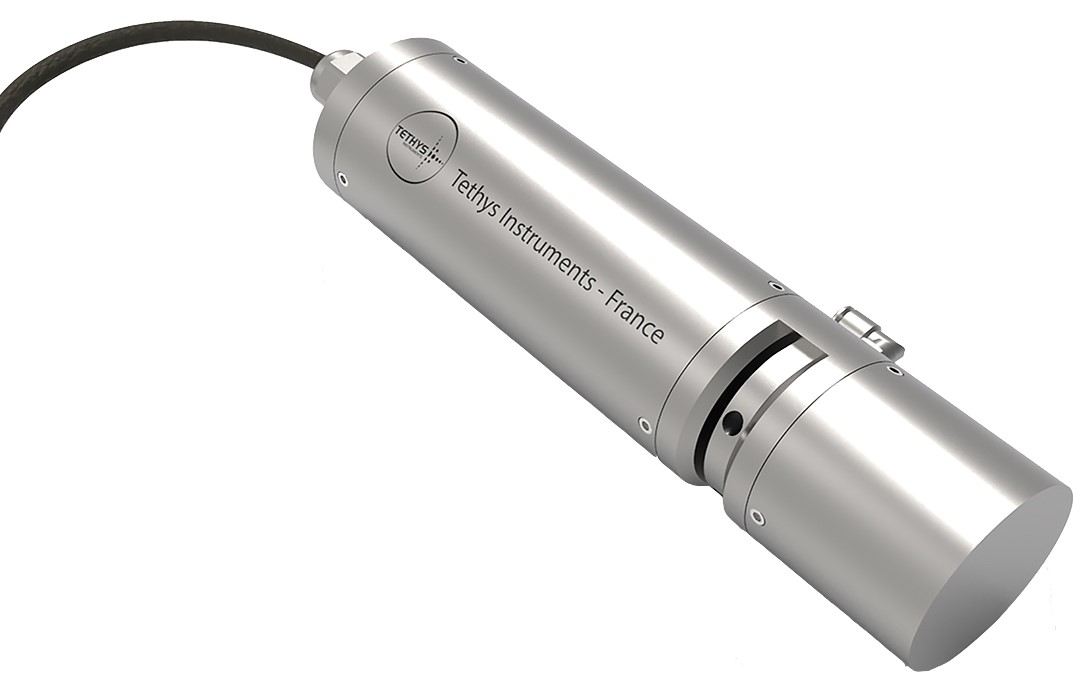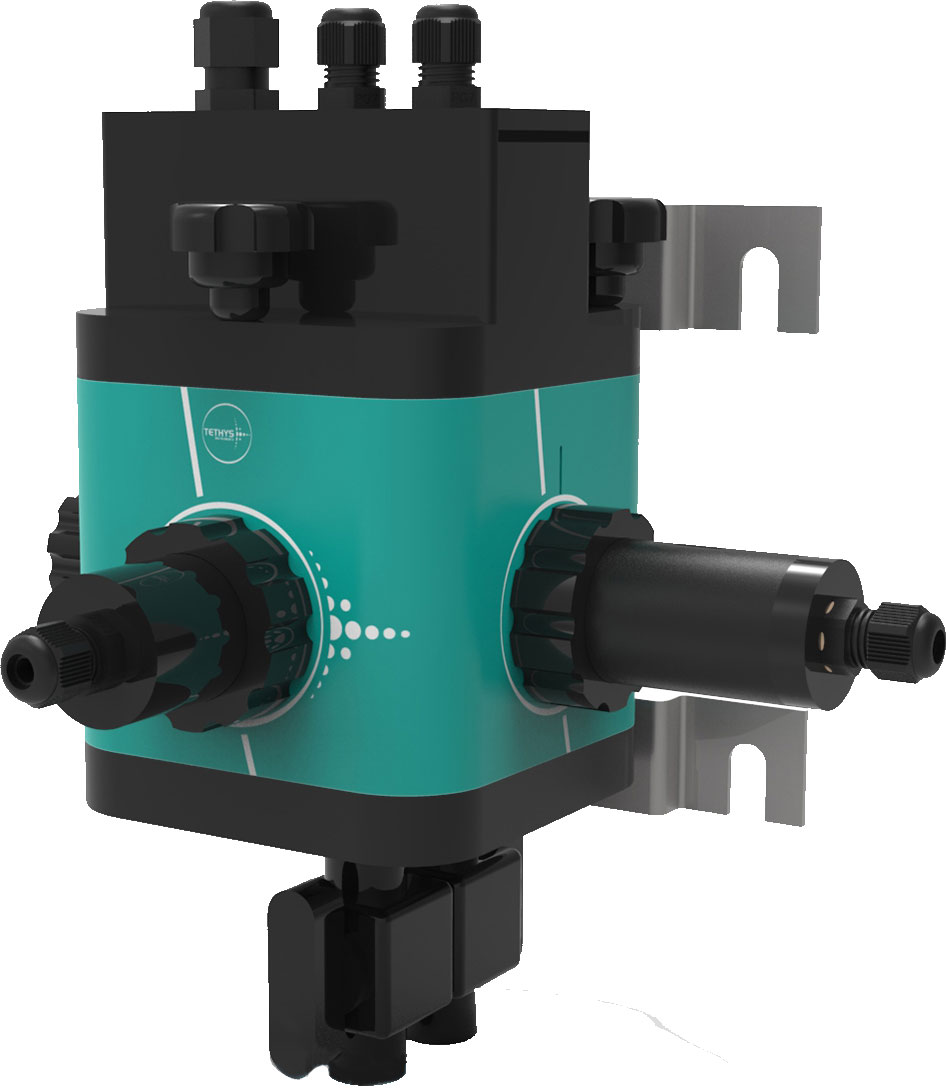UV500 IMO Online Water Analyser
In regards of the new regulations defined by IMO (international Maritime Organization) in 2020, ships must continuously control their emissions from fuel oil combustion. Global Sulphur content shall not exceed 0.5 % in ships’ fuel oil unless an exhaust gas cleaning (EGC) system is provided. The wash water resulting from the cleaning of the scrubber used to reduce the amount of pollutants in the exhaust stream is also subjected to regulations as it is discharge into the open sea. Discharge water must be effectively monitored before returning to the sea in order to limit its impact on marine ecosystems or environment. The MEPC 259(68) standards give specific criteria for water quality parameters.
- Fully compliant to MEPC 259 (68)
- Compact system
- User-friendly interface
- Multiplexing
- Compact system
- User-friendly interface
UV500 IMO Measurement Principle
-
UV500 IMO manufactured by Tethys Instruments is a specific on-line water analyser which provides a simple and fast method to measure PAH (Polycyclic Aromatic Hydrocarbons), pH, turbidity, and temperature using different modules. This analyser is designed to monitor inlet or outlet washwater of exhaust gas cleaning system with good accuracy, stability, and low operating cost. UV500 IMO can also be easily applied for open-loop, closed-loop or hybrid scrubber. The analyser is fully compliant with the MEPC 259(68) discharge criteria.
- An UV-fluorescence module allows the measurement of PAH in terms of equivalent concentration of phenanthrene(PAHpheeq). Infra-red laser diode is used to monitor turbidity by nephelometry. Internal probes allow to monitor pH and temperature.
- Thanks to its automatic cleaning system, the maintenance is roughly limited to a periodic refill of the inexpensive cleaning solution.
- All the measurements are done within 5 seconds.
- The UV source used for PAH measurement is xenon flash lamp specified for 109 flashes that corresponds to more than 10 years of lifetime with one measurements every minute.
- The infrared laser diode employed for turbidity complies with the ISO 7027:1999 standards.

UV fluorescence principle
1 : Xenon lamp,
2 : excitation filter,
3 : flow cell,
4 : emission filter,
5 : photomultiplier,
6 : reference photo detector

Laser Diode Turbidity Principal (Nephelometric)
1 : Laser diode (650 nm or 850 nm),
2 : flow cell,
3 : Photo detector
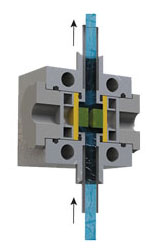
Patented Flow cell
1 : The patented flow cell allows to analyse very high level of suspended solids without clogging, making it suitable for industrial and municipal wastewater applications. More...
User-Friendly Interface
The large colour touch screen (10.4”) and intuitive interface available in 9 different languages (Chinese, English, French, German, Hungarian, Italian, Portuguese, Spanish, Turkish) makes very easy to test or configure the analyser.
Many test functions allow to test and troubleshoot each element of the analysers (light single, pump, solenoid valves, etc…) to set up quickly a maintenance diagnostic.
An acid resistant protection film on the screen assumes an efficient long-term protection.
Communication
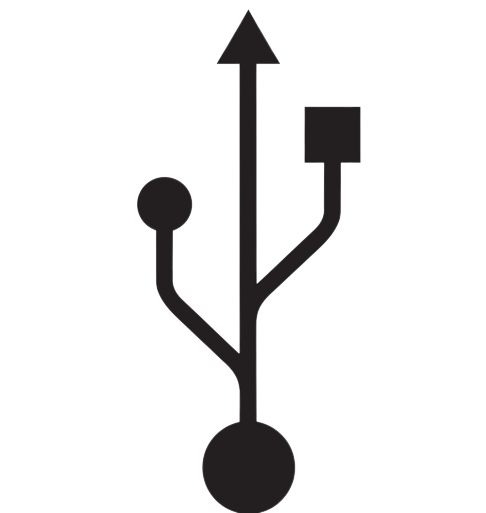
The RS232 port supports the MODBUS protocol to transmit each measuring channel value to a SCADA system.
Additional parameters are available like status code, error code, calibration values and pumps run time.
Basic 4-20 mA output modules can be plugged on the main board for each measuring channel, in the limit of 12 modules.
A USB port enables to download on any USB key the last 5000 recorded measurements as well as a diagnostic file containing the configuration and useful information for remote troubleshooting.
The recorded measurements file can be imported to Excel for graphs or other treatments.
The software of the analyser can be upgraded by connecting a USB key.
Multiplexing system
UV500 IMO can control two solenoid valves to select the inlet or the outlet of EGC system.
The 8 parameters (PAH, Turbidity, Temperature, pH) for inlet and outlet water can be displayed at the same time on the screen.
Autocleaning
Autozeroing
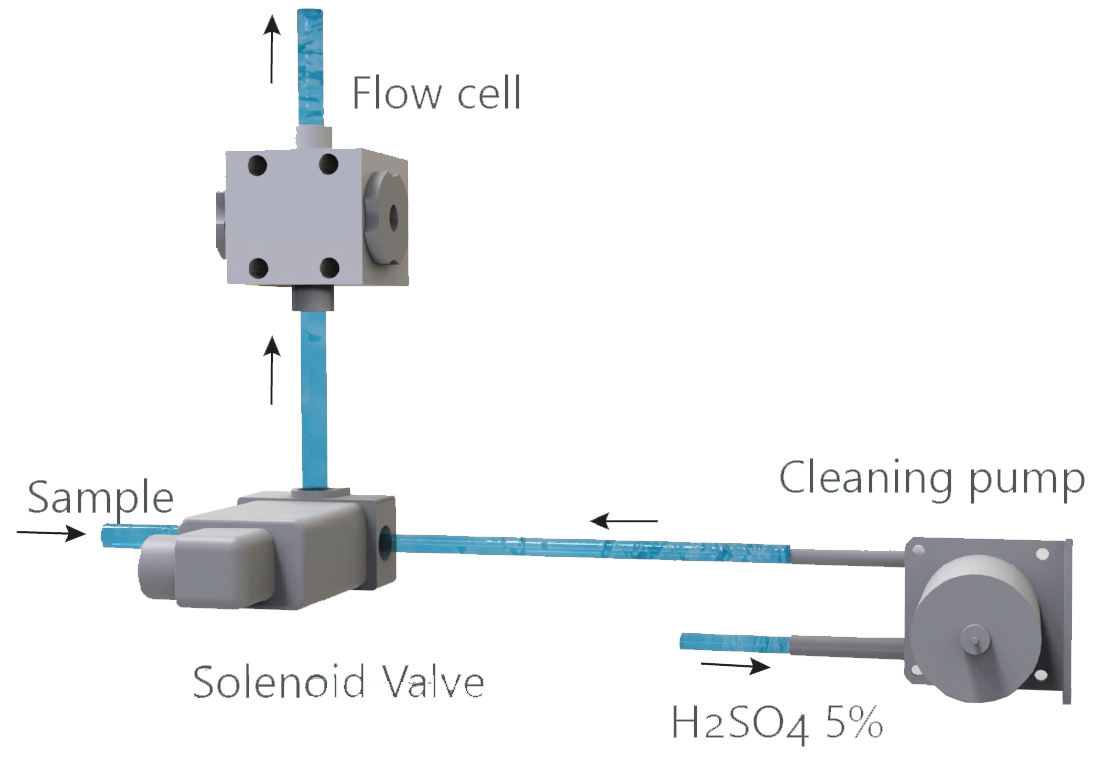
Sampling System
The UV500 can adapt to many different kind of sampling depending of the application : surface water, drinking water, process water or wastewater.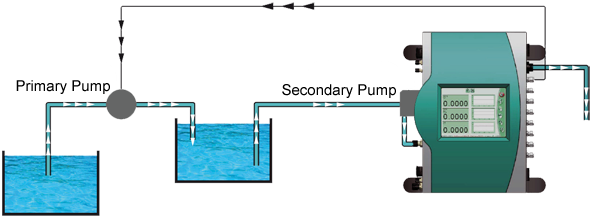
Internal View Of The Analyser
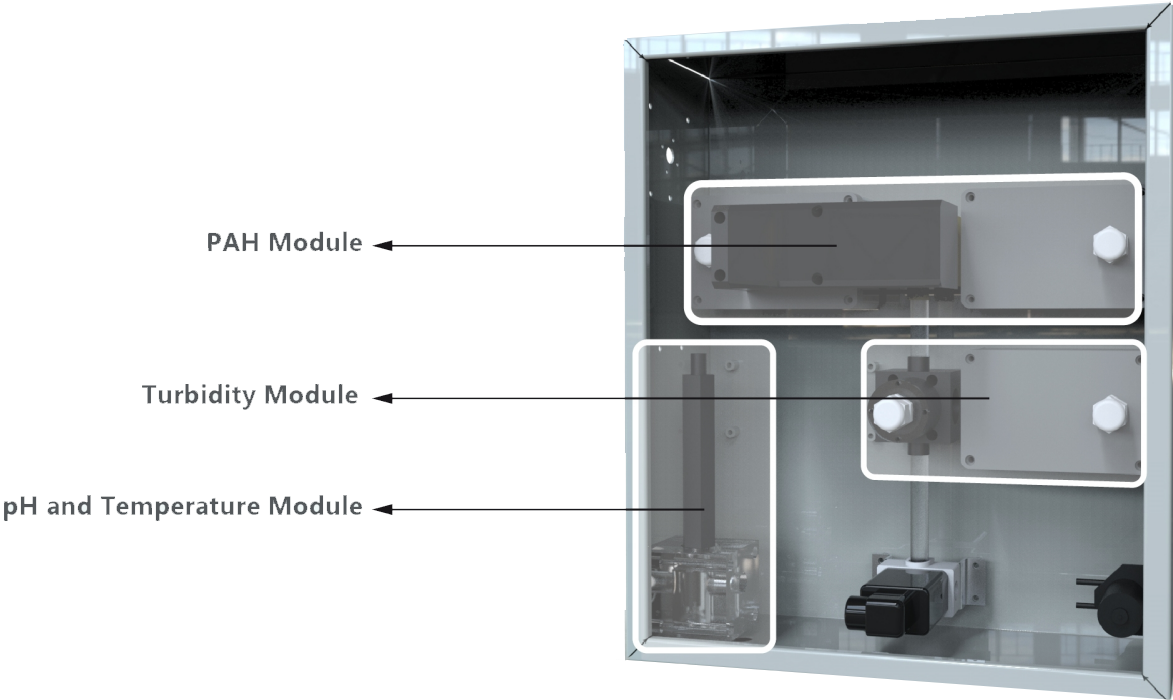
Typical EGCS Application
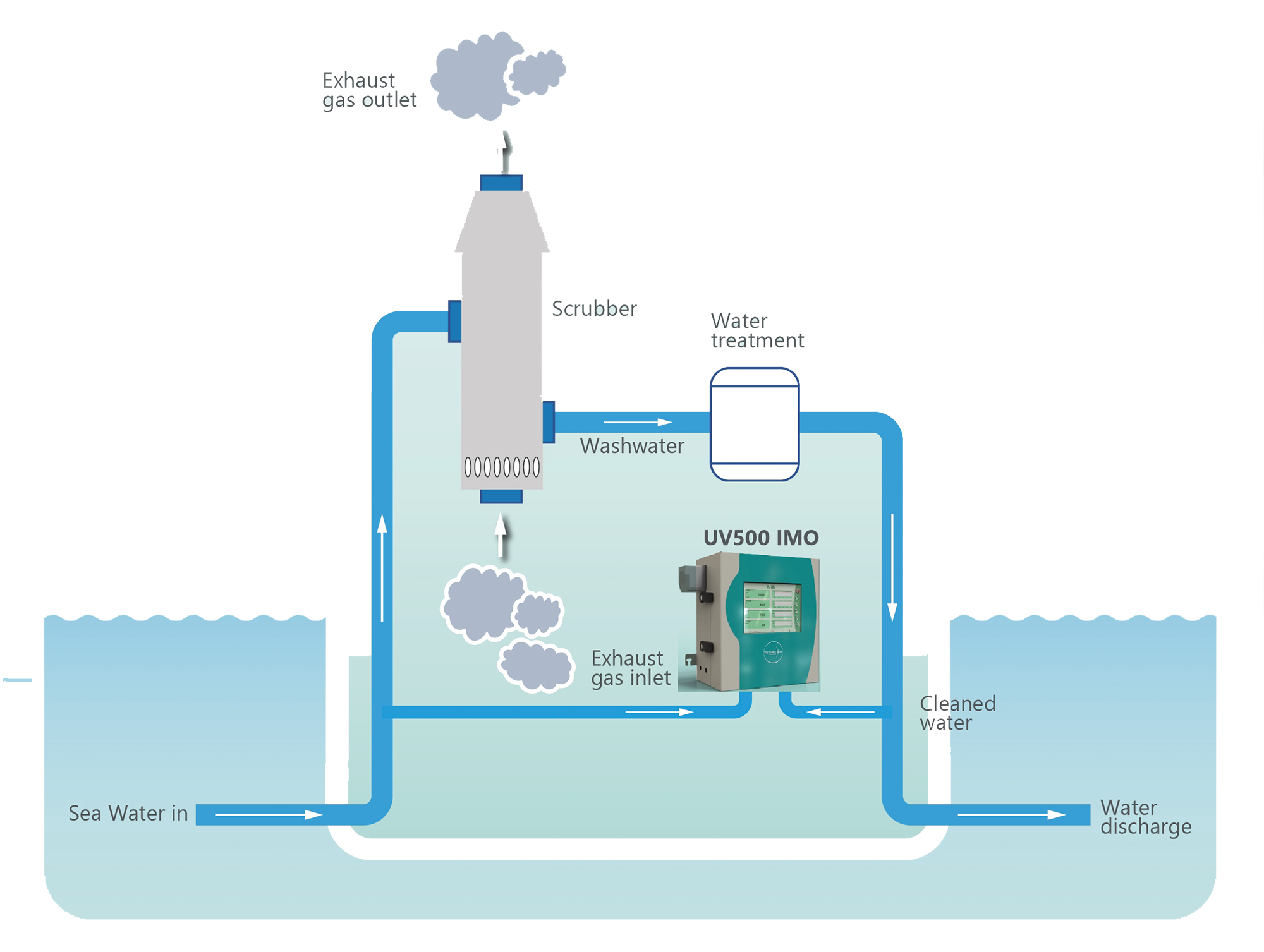
UV500 IMO Dimensional Drawing

In regards of the new regulations defined by IMO (international Maritime Organization) in 2020, ships must continuously control their emissions from fuel oil combustion. Global Sulphur content shall not exceed 0.5 % in ships’ fuel oil unless an exhaust gas cleaning (EGC) system is provided. The wash water resulting from the cleaning of the scrubber used to reduce the amount of pollutants in the exhaust stream is also subjected to regulations as it is discharge into the open sea. Discharge water must be effectively monitored before returning to the sea in order to limit its impact on marine ecosystems or environment. The MEPC 259(68) standards give specific criteria for water quality parameters.
- Fully compliant to MEPC 259 (68)
- Compact system
- User-friendly interface
- Multiplexing
- Compact system
- User-friendly interface
UV500 IMO Parameters Specifications
| Parameter | Standard range
Other ranges on request |
Typical Repeatability For low values (<10% FS) |
Accuracy
On standard solution |
|---|---|---|---|
| PAHPheeq | 0 – 1000 µg/L |
± 15 µg/L For low values < 10% FS |
± 3% |
| pH | 0 – 14 |
± 0.01 pH |
± 2% |
| Turbidity | 0 – 100 NTU 0 – 1000 NTU |
± 0.1 NTU ± 1 NTU |
± 2%
± 2% |
| Temperature | 0-80°C | ± 0.1°C | ± 2% |
UV500 IMO General Specifications
| Sample flow | Recommended : 0 – 5 L/min
|
| Sample pressure | 0 – 4 Bar (0 - 1 Bar with sampling peristaltic pump) |
| Sample temperature | 0 °C to 80 °C 0 to 80 °C for NH4 or H2S |
| Wet parts material | Quartz, Polypropylene, Polyethylene, FPM (Viton), PMMA (+ Pharmed and glass for NH4 or H2S) Compatible with sea water |
| Measuring time | 5s |
| Measurement interval | 1 min to 720 min Physicochemical parameters may be continuous |
| Memory | 5000 lines of measurements (up to 16 channels) with date and time |
| Consumption | Cleaning solution (5% sulfuric acid): 220 ml/day |
| Maintenance interval | Recommended: 6 months to 1 year (except for refilling) |
| Power supply | 90 – 264 VAC / Maxi 100 VA / 50 – 60 Hz |
| Screen | 10.4” Colour TFT LCD 640×480 pixels with LED backlight |
| Communication | RS232 with MODBUS protocol RS485 with MODBUS protocol for external probes (DO, TSS) USB WI-FI (IEEE802.11B) optional Ethernet (IEEE802.3) optional |
| Certifications | CE, EN 61010-1, EN 61326 |
| Enclosure | Stainless steel with epoxy coating, IP65, wall mounting brackets |
| Dimensions | 360×420×229 mm (H×L×D) |
| Weight | 23 kg |
| Marine type approval | DNV GL Statement of Compliance (Pending) Lloyd’s Register (Pending) Bureau Veritas (Pending) |
UV500 IMO Parts references
| Basic Unit | |
| UV500 IMO | PAH (Poly-aromatic Hydrocarbons) Range : 0 – 1000 πg/L phenanthrene Turbidity: Internal turbidity sensor Low range: 0 – 100 NTU, High range: 0 – 1000 NTU pH: 0 – 14 Temperature: 0 – 80 oC Color graphic display 640×480 pixels with touch screen Build-in data logger, memory 5000 measurements for each parameter 12 sockets for input and output modules (not including, refer to options) 7 available glands for inputs / outputs RS232 including (Sub-D 9 ways female connector) with 2 meters cable for PC USB port integrated for USB key connection Automatic cleaning system with 2 – litres tank Power supply 90-260 VAC 47-63 Hz with power cord 2 meters Enclosure IP65/Nema3 360×420×229 mm (WHD) / 20 to 30 kg Mounting lugs for wall |
| Sampling Pump | |
| P | Sampling peristaltic pump for unpressurized water Built-it on the left side of the enclosure Flow of about 600 mL/min Discontinuing operating to increase tube lifetime |
| Output modules | |
| OUT4-20-500 RELAY500 |
4-20 mA output module Isolated 4-20 mA output Active output,Max laod 500 Ohm Relay module :contact rating: 2A/220 V |
In regards of the new regulations defined by IMO (international Maritime Organization) in 2020, ships must continuously control their emissions from fuel oil combustion. Global Sulphur content shall not exceed 0.5 % in ships’ fuel oil unless an exhaust gas cleaning (EGC) system is provided. The wash water resulting from the cleaning of the scrubber used to reduce the amount of pollutants in the exhaust stream is also subjected to regulations as it is discharge into the open sea. Discharge water must be effectively monitored before returning to the sea in order to limit its impact on marine ecosystems or environment. The MEPC 259(68) standards give specific criteria for water quality parameters.
- Fully compliant to MEPC 259 (68)
- Compact system
- User-friendly interface
- Multiplexing
- Compact system
- User-friendly interface
In regards of the new regulations defined by IMO (international Maritime Organization) in 2020, ships must continuously control their emissions from fuel oil combustion. Global Sulphur content shall not exceed 0.5 % in ships’ fuel oil unless an exhaust gas cleaning (EGC) system is provided. The wash water resulting from the cleaning of the scrubber used to reduce the amount of pollutants in the exhaust stream is also subjected to regulations as it is discharge into the open sea. Discharge water must be effectively monitored before returning to the sea in order to limit its impact on marine ecosystems or environment. The MEPC 259(68) standards give specific criteria for water quality parameters.
- Fully compliant to MEPC 259 (68)
- Compact system
- User-friendly interface
- Multiplexing
- Compact system
- User-friendly interface
